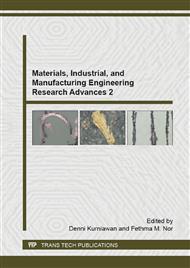p.556
p.561
p.566
p.571
p.577
p.583
p.588
p.593
p.601
Dynamic Strength Analysis for Mooring Design of Ship
Abstract:
Mooring and Towing Fittings are widely used for various devices and fittings to safely fasten vessels to quays, jetties, sea-floating buoys. The reinforcement of the vessels on which the mooring fittings are installed and the mooring fittings themselves must be of sufficient strength because damaged ships lead to sea pollution such as oil or fuel oil spillage. The purpose of this study is to suggest a standardization model for strength analysis of closed chocks by using the Finite Element Method and Equipment Test. Closed chocks can be divided into the seat type and the bulwark type, and Finite Element analysis for a total of 20 closed chocks of each type was performed to prove the suitability of standardization objects. Also, The numerical results obtained by FE analysis were compared with experimental results for validation. Thus, standardization and strength analysis based on two types of models with the use of Finite Element analysis and equipment test was successfully carried out. These results can help both large and small shipyards to standardize the use of closed chocks to prevent oil spillage damage of the hull and other large accidents caused by the drifting of ships.
Info:
Periodical:
Pages:
577-582
Citation:
Online since:
October 2015
Authors:
Price:
Сopyright:
© 2015 Trans Tech Publications Ltd. All Rights Reserved
Share:
Citation:


